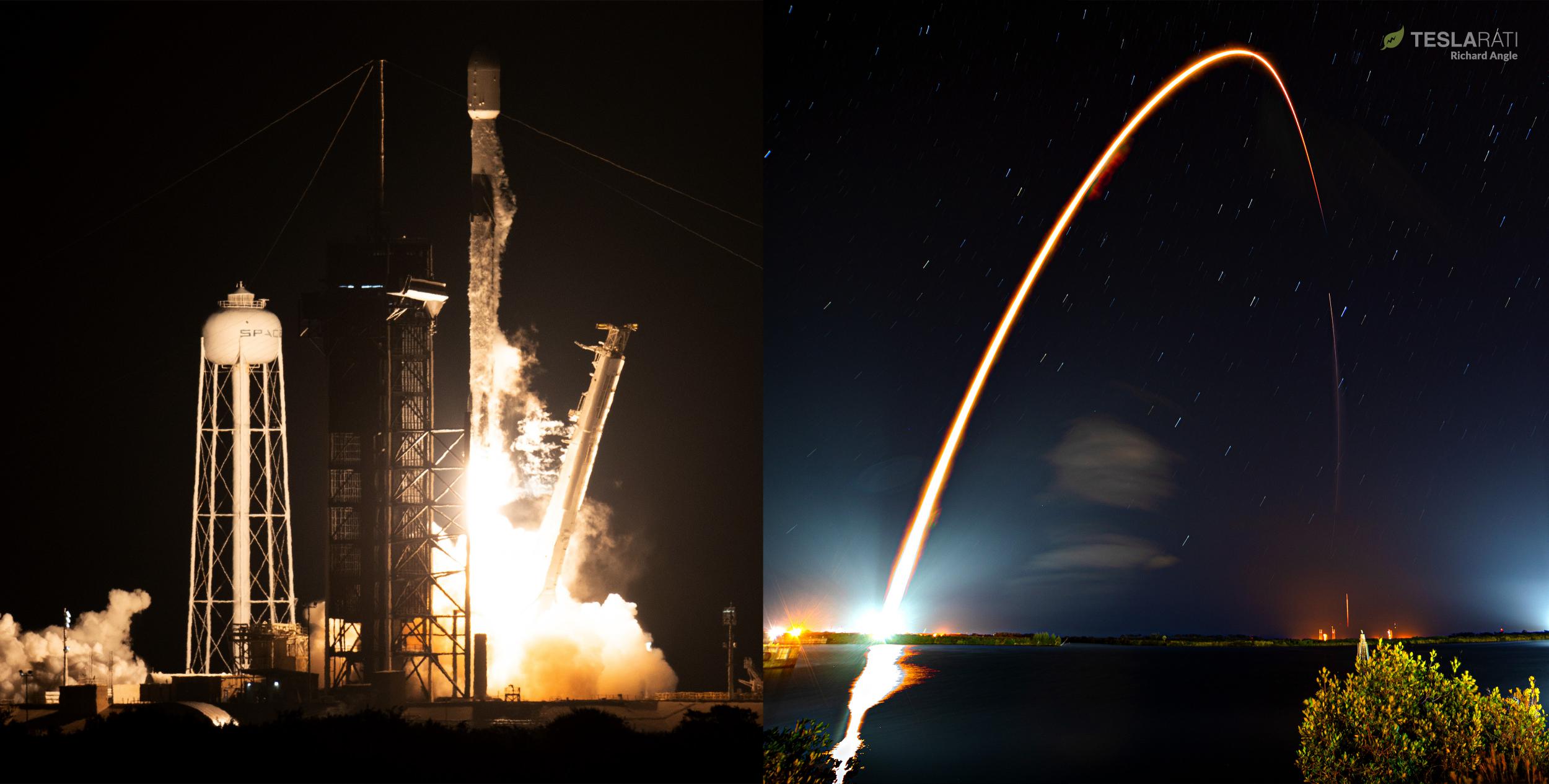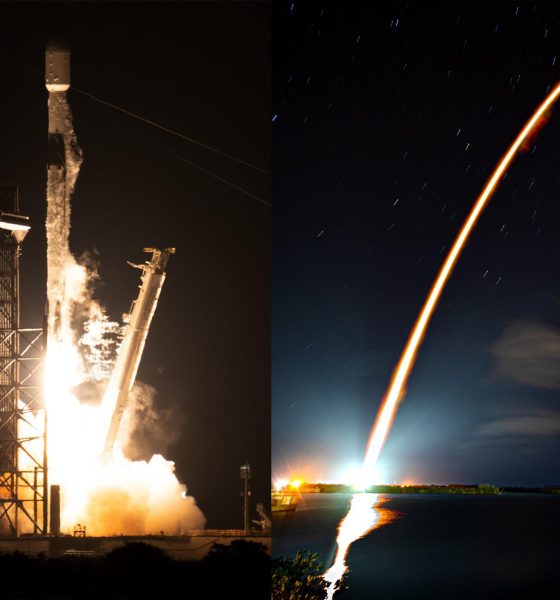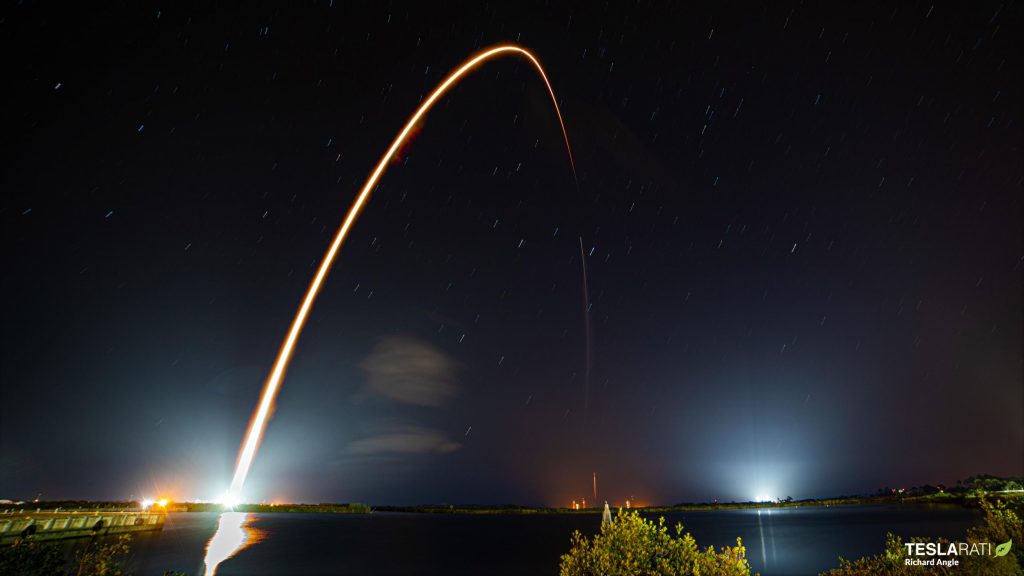

News
SpaceX launches NASA mission to study black holes, dead stars, and more
SpaceX has successfully launched NASA’s Imaging X-ray Polarimetry Explorer telescope, paving the way for a unique aspect of black holes, a variety of dead stars, and other odd phenomena to be explored in unprecedented breadth and detail.
Marking the first time a NASA payload has launched on the fifth flight of a reused SpaceX rocket, Falcon 9 booster B1061 lifted off at 1am EST (06:00 UTC) to kick off the 330 kg (~730 lb) IXPE spacecraft’s journey to orbit. SpaceX’s workhorse rocket performed flawlessly. Just over eight minutes after liftoff, Falcon 9’s upper stage completed the first of two planned burns, entering a low parking orbit. About thirty seconds later, Falcon 9 B1061 stuck its fifth drone ship landing in 13 months, marking the end of another successful high-profile launch for the booster and ensuring that it will be able to complete many more such launches over the next few years.

The first portion of the launch completed, Falcon 9’s upper stage then coasted in orbit for about 20 minutes before ignited for one last (very expensive) burn to place IXPE in its desired orbit. Known as a plane or inclination change, the maneuver – especially when performed deep in a large gravitational well – is exceptionally expensive, requiring an unintuitively large amount of launch vehicle performance (known as delta-V). The reason: IXPE’s nominal orbit is almost exactly equatorial, which Falcon 9’s Cape Canaveral launch site is about 28.5 degrees north of.
Lowering that inclination after launch requires a very energetic maneuver. Before Falcon 9 beat it out for the launch contract, IXPE was expected to launch on Orbital ATK’s air-launched Pegasus XL rocket, which would have allowed IXPE to be launched at the equator. However, SpaceX ultimately submitted a bid to launch IXPE for just ~$50M – cheaper than its competitor despite the fact that Falcon 9 is more than 20 times larger and could potentially launch an entire Pegasus XL into orbit. However, while Falcon 9 is designed to launch almost 23 tons into orbit in an expendable configuration and more than 16 tons with booster and fairing recovery, it’s only capable of launching about 1-2 tons to IXPE’s desired combination of an equatorial inclination and a ~600 km (~370 mi) orbit.
Ultimately, Falcon 9 completed the inclination change without issue, marking the successful completion of its first equatorial launch ever and SpaceX’s 28th successful launch in 2021 alone. Unlike a significant majority of spacecraft, IXPE was launched directly into its operational orbit and will likely need just a few days to refine its position and a few weeks after that for ground controllers to verify the health of all its systems and deploy a 4m (`13 ft) long ‘boom’ needed to operate its unique telescope.
If or when everything is up and running, IXPE will spend a minimum of two years observing at least 50 of the weirdest objects and phenomena in the universe. While many of those objects can’t be directly imaged, IXPE’s goal is to analyze the polarization of X-rays – high-energy beams of radiation – they produce at sensitivities two orders of magnitude greater than any previous experiment. In theory, that should allow IXPE to put long-held laws of relativity and quantum physics to the test in some of the most extreme environments in the universe, including particularly exotic nebulae (giant gas clouds), black holes, and bizarre neutron stars (including lighthouse-like pulsars and magnetars – dead stars with magnetic fields strong enough to compress atoms into cylindrical rods and make the actual vacuum of space refract light like a crystal).

News
Tesla aims to combat common Full Self-Driving problem with new patent
Tesla writes in the patent that its autonomous and semi-autonomous vehicles are heavily reliant on camera systems to navigate and interact with their environment.

Tesla is aiming to combat a common Full Self-Driving problem with a new patent.
One issue with Tesla’s vision-based approach is that sunlight glare can become a troublesome element of everyday travel. Full Self-Driving is certainly an amazing technology, but there are still things Tesla is aiming to figure out with its development.
Unfortunately, it is extremely difficult to get around this issue, and even humans need ways to combat it when they’re driving, as we commonly use sunglasses or sun visors to give us better visibility.
Cameras obviously do not have these ways to fight sunglare, but a new patent Tesla recently had published aims to fight this through a “glare shield.”
Tesla writes in the patent that its autonomous and semi-autonomous vehicles are heavily reliant on camera systems to navigate and interact with their environment.

The ability to see surroundings is crucial for accurate performance, and glare is one element of interference that has yet to be confronted.
Tesla described the patent, which will utilize “a textured surface composed of an array of micro-cones, or cone-shaped formations, which serve to scatter incident light in various directions, thereby reducing glare and improving camera vision.”

The patent was first spotted by Not a Tesla App.
The design of the micro-cones is the first element of the puzzle to fight the excess glare. The patent says they are “optimized in size, angle, and orientation to minimize Total Hemispherical Reflectance (THR) and reflection penalty, enhancing the camera’s ability to accurately interpret visual data.”
Additionally, there is an electromechanical system for dynamic orientation adjustment, which will allow the micro-cones to move based on the angle of external light sources.
This is not the only thing Tesla is mulling to resolve issues with sunlight glare, as it has also worked on two other ways to combat the problem. One thing the company has discussed is a direct photon count.
CEO Elon Musk said during the Q2 Earnings Call:
“We use an approach which is direct photon count. When you see a processed image, so the image that goes from the sort of photon counter — the silicon photon counter — that then goes through a digital signal processor or image signal processor, that’s normally what happens. And then the image that you see looks all washed out, because if you point the camera at the sun, the post-processing of the photon counting washes things out.”
Future Hardware iterations, like Hardware 5 and Hardware 6, could also integrate better solutions for the sunglare issue, such as neutral density filters or heated lenses, aiming to solve glare more effectively.
Elon Musk
Delaware Supreme Court reinstates Elon Musk’s 2018 Tesla CEO pay package
The unanimous decision criticized the prior total rescission as “improper and inequitable,” arguing that it left Musk uncompensated for six years of transformative leadership at Tesla.

The Delaware Supreme Court has overturned a lower court ruling, reinstating Elon Musk’s 2018 compensation package originally valued at $56 billion but now worth approximately $139 billion due to Tesla’s soaring stock price.
The unanimous decision criticized the prior total rescission as “improper and inequitable,” arguing that it left Musk uncompensated for six years of transformative leadership at Tesla. Musk quickly celebrated the outcome on X, stating that he felt “vindicated.” He also shared his gratitude to TSLA shareholders.
Delaware Supreme Court makes a decision
In a 49-page ruling Friday, the Delaware Supreme Court reversed Chancellor Kathaleen McCormick’s 2024 decision that voided the 2018 package over alleged board conflicts and inadequate shareholder disclosures. The high court acknowledged varying views on liability but agreed rescission was excessive, stating it “leaves Musk uncompensated for his time and efforts over a period of six years.”
The 2018 plan granted Musk options on about 304 million shares upon hitting aggressive milestones, all of which were achieved ahead of time. Shareholders overwhelmingly approved it initially in 2018 and ratified it once again in 2024 after the Delaware lower court struck it down. The case against Musk’s 2018 pay package was filed by plaintiff Richard Tornetta, who held just nine shares when the compensation plan was approved.
A hard-fought victory
As noted in a Reuters report, Tesla’s win avoids a potential $26 billion earnings hit from replacing the award at current prices. Tesla, now Texas-incorporated, had hedged with interim plans, including a November 2025 shareholder-approved package potentially worth $878 billion tied to Robotaxi and Optimus goals and other extremely aggressive operational milestones.
The saga surrounding Elon Musk’s 2018 pay package ultimately damaged Delaware’s corporate appeal, prompting a number of high-profile firms, such as Dropbox, Roblox, Trade Desk, and Coinbase, to follow Tesla’s exodus out of the state. What added more fuel to the issue was the fact that Tornetta’s legal team, following the lower court’s 2024 decision, demanded a fee request of more than $5.1 billion worth of TSLA stock, which was equal to an hourly rate of over $200,000.
Delaware Supreme Court Elon Musk 2018 Pay Package by Simon Alvarez
News
Tesla Cybercab tests are going on overdrive with production-ready units
Tesla is ramping its real-world tests of the Cybercab, with multiple sightings of the vehicle being reported across social media this week.

Tesla is ramping its real-world tests of the Cybercab, with multiple sightings of the autonomous two-seater being reported across social media this week. Based on videos of the vehicle that have been shared online, it appears that Cybercab tests are underway across multiple states.
Recent Cybercab sightings
Reports of Cybercab tests have ramped this week, with a vehicle that looked like a production-ready prototype being spotted at Apple’s Visitor Center in California. The vehicle in this sighting was interesting as it was equipped with a steering wheel. The vehicle also featured some changes to the design of its brake lights.
The Cybercab was also filmed testing at the Fremont factory’s test track, which also seemed to involve a vehicle that looked production-ready. This also seemed to be the case for a Cybercab that was spotted in Austin, Texas, which happened to be undergoing real-world tests. Overall, these sightings suggest that Cybercab testing is fully underway, and the vehicle is really moving towards production.
Production design all but finalized?
Recently, a near-production-ready Cybercab was showcased at Tesla’s Santana Row showroom in San Jose. The vehicle was equipped with frameless windows, dual windshield wipers, powered butterfly door struts, an extended front splitter, an updated lightbar, new wheel covers, and a license plate bracket. Interior updates include redesigned dash/door panels, refined seats with center cupholders, updated carpet, and what appeared to be improved legroom.
There seems to be a pretty good chance that the Cybercab’s design has been all but finalized, at least considering Elon Musk’s comments at the 2025 Annual Shareholder Meeting. During the event, Musk confirmed that the vehicle will enter production around April 2026, and its production targets will be quite ambitious.








